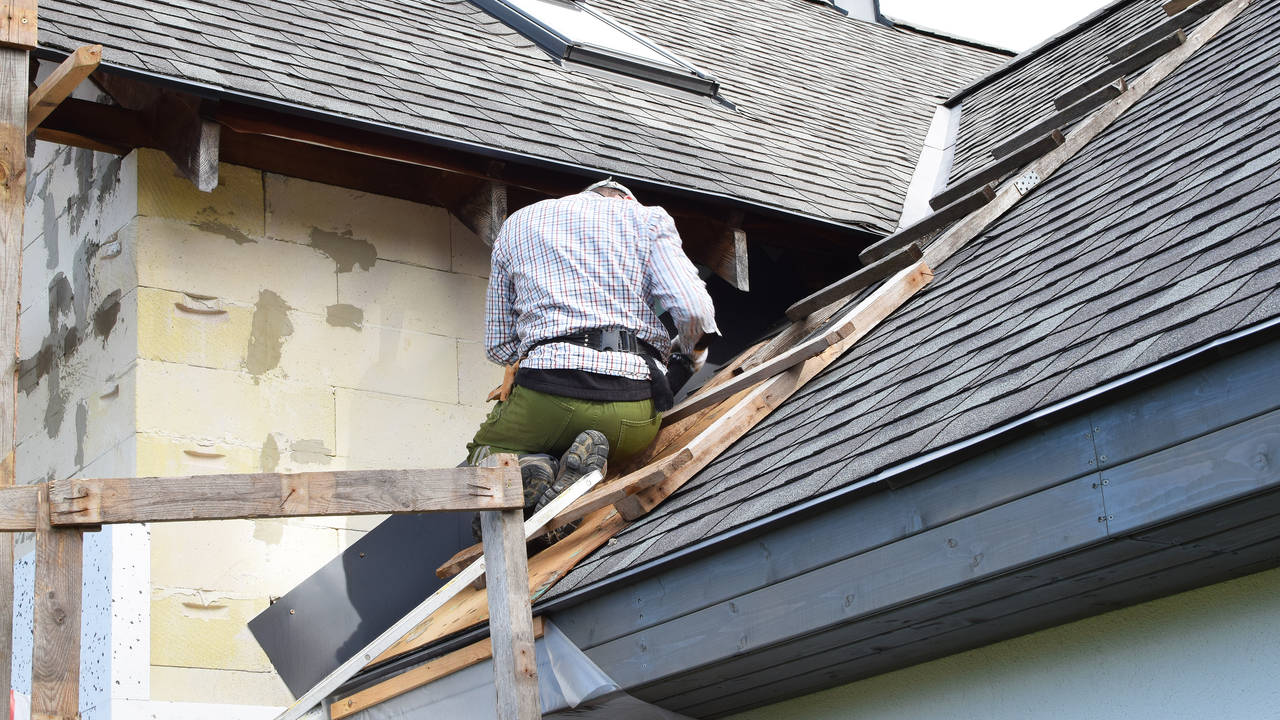Ideally, if you’re new to D.I.Y. home renovation, a full re-roofing won’t be your very first project, but there’s no use telling intrepid do-it-yourselfers to check their ambitions—especially when it comes to their domain.
If you’re considering installing a new roof, chances are you’ve already chosen material, invested in new tools, and pitched friends and family on how great it will look when it’s done. Before you kick off your project in earnest, though, it’s important to step back and cover some basics.
It’s not enough to choose a random Saturday or Sunday to scale a ladder and get going; there are numerous factors to consider—from your attire to the forecast to your local permit laws. To give you a better idea of which items to put at the top of your roofing checklist, here are several key considerations.
Assess Your Comfort With Heights
You may be reading this, thinking, “If I’m roofing my own home, I’m clearly past this stage.” Fair point, especially if this isn’t your first roofing project. But for those roofing their home for the first time, especially those with lofty properties, it’s a consideration you absolutely must make—because discovering an aversion to heights 15-20 feet in the air is neither enjoyable or safe.
Most people don’t have occasion to be so high up for an extended period of time. Think about all the instances in which you’ve had to; now think about the instances in which you’ve been high up without some sort of safety apparatus. For example, you may have gone ziplining once or been on a tower drop ride at a theme park a few times; but in those cases, you had the benefit of a safety harness, bracing equipment and, hopefully, a long list of operational protocols to ensure your complete safety.
You likely won’t have these benefits as you roof your home, so before you begin, take 10-15 minutes to stand atop your home and acclimate yourself to the height. Be honest with yourself, too; if the discomfort is too much, you’re better off reaching out to professional contractors.
Ensure Sure Footing
Depending on your home, you may be required to climb a story or two just to do the work. Obviously, this makes your safety the primary concern; but those doing their own roofing for the first time may be so wrapped up in the scale of what they’ve committed to that they overlook the simplest precautions.
Along with your roofing materials, one of your first investments should be a new pair of rubber sole shoes, preferably with a steel toe, to give yourself optimal traction and added protection against falling debris. If you have rubber-soled shoes already, check the wear on them and consider their age. If you’ve had them for a few years, invest in a new pair. It may seem like frivolous overhead tacked onto an already costly project, but a slip and fall accident will result in a hospital bill that’s exponentially more expensive.
Sure footing doesn’t end with your footwear, though. Before you begin work, clear your roof of debris, loose shingles and hammer in protruding nails. It’s also important to keep track of your tools as you use them to prevent them from shifting around and becoming obstructions for you and others.
Check the Forecast
Clearly, no one wants to re-roof their home during a blizzard or the hottest day of the year, but the need to shore up their roof through sustained severe weather may cause homeowners to make D.I.Y. touch-ups instead of hiring professionals—even if that means doing so in inclement or flat-out dangerous conditions.
For example, a homeowner in Indianapolis may opt to make structural improvements on their own instead of seeking out an Indianapolis roofing company because they need immediate improvements following a severe hail or thunderstorm.
If you’re considering a similar strategy, make sure to consult a 10-day or two-week forecast for your area to choose the best time to complete your project. If you plan to start work in a week’s time or later, revisit that same forecast multiple times before the day comes to ensure there are no late developments.
Get a Permit
This is an especially important if you plan on selling your home in the near future. Purchasing construction permits can be expensive—with the national average fee resting just north of $1,200—but, with the fines and stop-work orders that commonly interrupt unpermitted projects—the time and financial expense of not getting a permit can be just as, if not more, costly.
Permitted renovations are publicly recorded, heavily considered during property valuations and help create more transparent home histories. If you’re investing so much time and effort in your new roof, it’s important to ensure that everyone who sees the finished result—whether it’s a home inspector or a potential buyer—regards it as a legitimate renovation that adheres to local building codes.
Doing your own roofing is a high risk-high reward endeavor, but there are numerous small tasks you can do to guarantee your safety, preserve the legality of your project, and create a satisfying result—all without the help of professional roofers. Just make sure to cover the basics first!


Comments(0)